Rainy-Day Block Play
Today’s dark skies and heavy rain have driven us indoors for what started out as a low-energy day. But now it’s even quieter—as in “too quiet.”
I can feel my anxiety rising. But as I look around and see the children engaged in deep, calm block play—with wooden blocks strewn all over our classroom—I break into a smile.
The morning’s inclement weather has led to a play buzz!
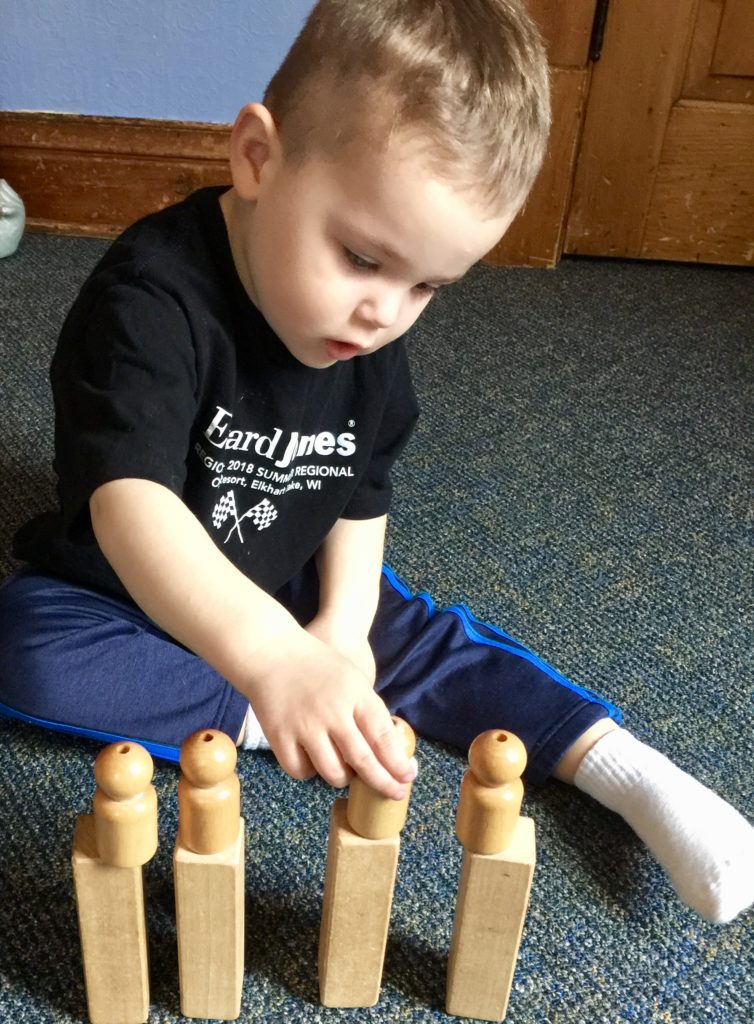
We spend a major part of our days building something. I credit all of this productivity to our unit blocks. Loose parts enhance the block-play experience, leading to an even richer, deeper level of creativity.
I’ve mentioned our love of Magnatiles in the past, but I secretly worry that these magnetic tiles turn us into lazy builders. When we return to wooden blocks—and unit blocks in particular—my heart soars and I love teaching all the more. I know that I’m biased, but I truly believe that—if we were to limit the learning materials in early childhood classrooms to blocks, loose parts and great books—we’d have everything we need to prepare our youngest learners for success in school and in life.
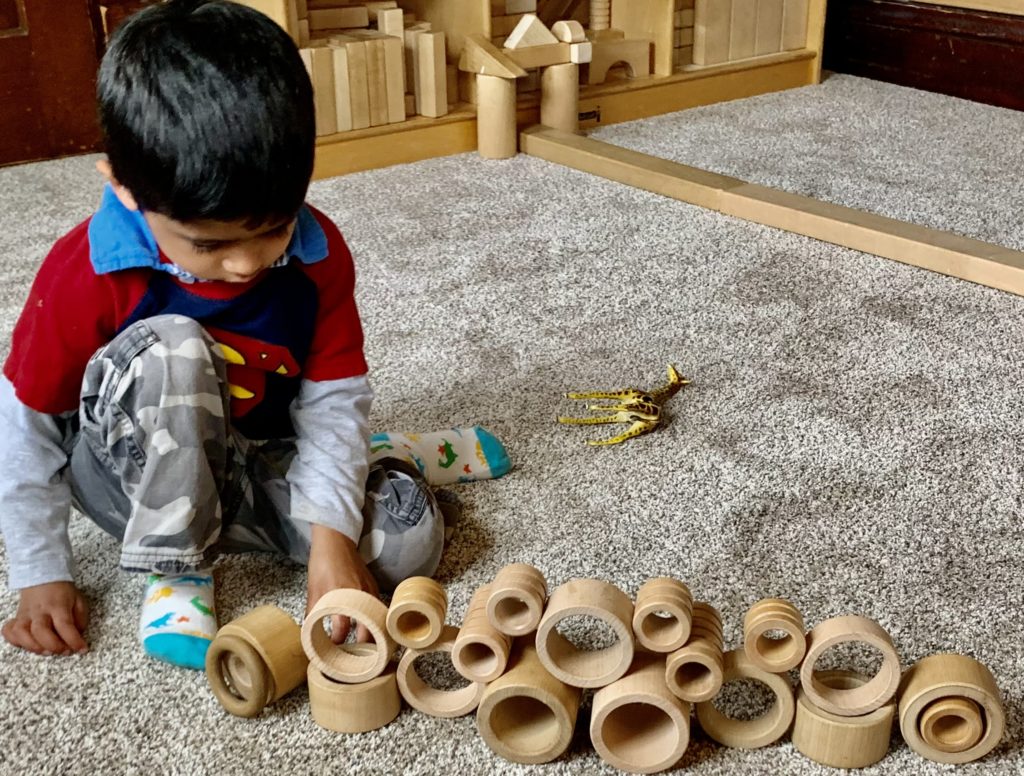
An inviting block-play area will create limitless possibilities for hands-on investigating and experimenting. When you integrate math, science and engineering into your block activities by giving the children time to explore and investigate, the learning becomes even more relevant. If you create a space where children can keep their block projects set up overnight, that would be ideal. Ownership over a construction project is important to a child. By respecting what a child creates, as well as the effort that went into that creation, we also honor the child.
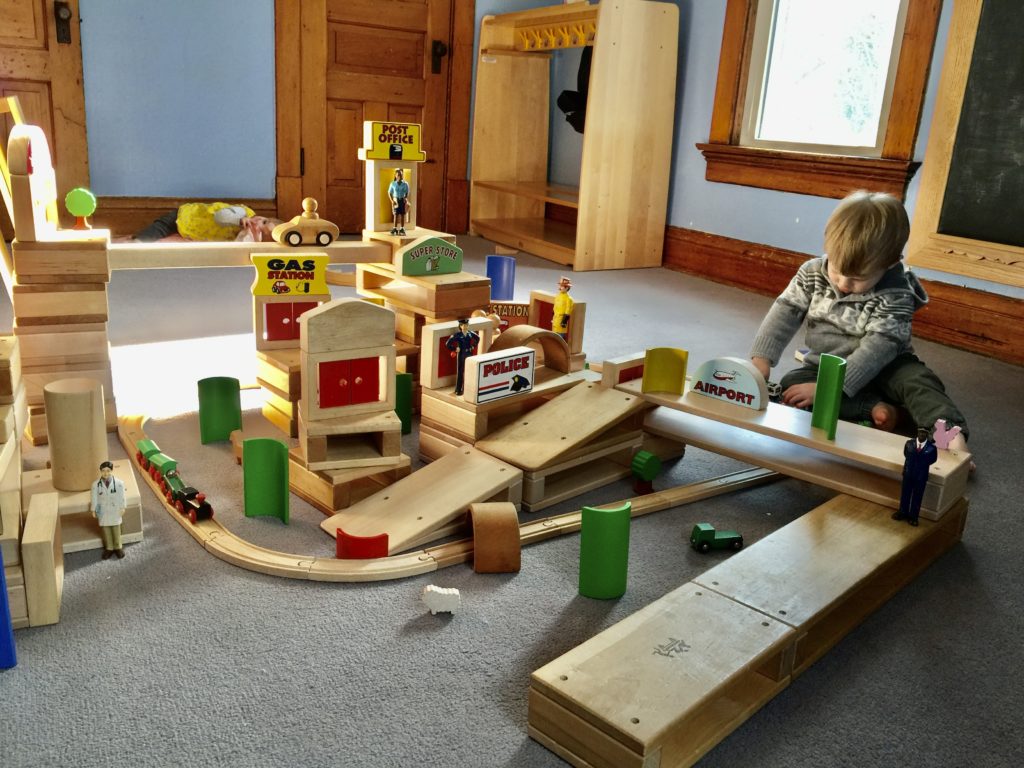
I am a firm believer that you can’t have too much space for a block area. The bigger the better! Repurpose a rarely used area for block play and make it as big as you can. You won’t regret it!
See that dress-up unit in the corner (above), next to the child resting on the floor? (I told you it was a low-energy morning!) I took it out and replaced it with shelving for loose parts to be used in our block area.
We get the most bang for our brains with block play, so the space that we allocate for blocks becomes our most valuable real estate.
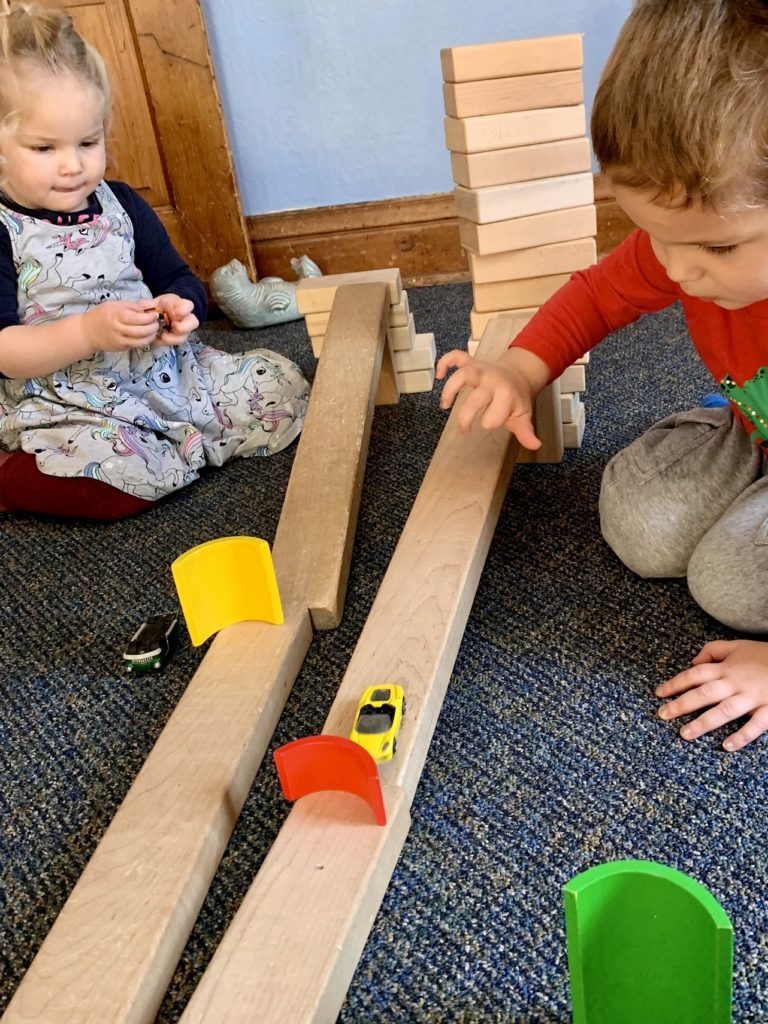
Productive block play takes time, so 15-20 minutes won’t be sufficient.
You can’t teach creativity. But you can give children the gift of time for hands-on investigations with materials that encourage creative play. These extended play periods foster a deeper level of engagement, which will help your early learners meet their benchmarks faster than you can check them off of the learning standards list!
Early education activities should tap into a child’s natural curiosity. While playing with blocks, children learn important concepts such as measurement, spatial reasoning, comparison, estimation, symmetry and balance. You can call it STEAM, but kids just call it fun.
“Sally! Watch this!” Jimmy calls out. “My car is going to knock down these trees!” Jimmy has summoned his friends over to share in his playful experimentation with ramps, speed and gravity.
Inclined planes offer endless opportunities for children to experiment and make repeated attempts to achieve their desired outcomes. As they experiment with inclines, children begin asking questions, which leads to further scientific and mathematical investigation.
Sally loses interest in Jimmy’s experiment and moves across the room to join another child building a block tower. Noelle takes Sally’s place by Jimmy and joins in his ramp play.
Block building follows the natural flow of children’s curiosity and concentration. As they “go with the flow,” they are enjoying the learning process while continuing to develop their STEAM skills.
People often talk about the ways in which block play promotes the development of fine-motor skills and other areas of physical development. But you rarely hear educators talk about the executive function and self-regulation skills that children develop through block play. Working as a team or carefully adding a block to a tower without knocking it down requires self-control![]() , patience, persistence and resilience.
, patience, persistence and resilience.
Block play is always developmentally appropriate—regardless of a child’s developmental level. Learning happens when we give children the gifts of time, blocks and lazy days.
So, the next time the sky is gray and the air is wet with rain and everyone’s energy is as low as the barometric pressure, why not toss out your planned activities and allocate a big, juicy stretch of time to block play?
You’ll be amazed at how much learning happens when we go with the flow and let our early learners investigate and experiment to their heart’s content or (heck) just lie around and observe their friends!
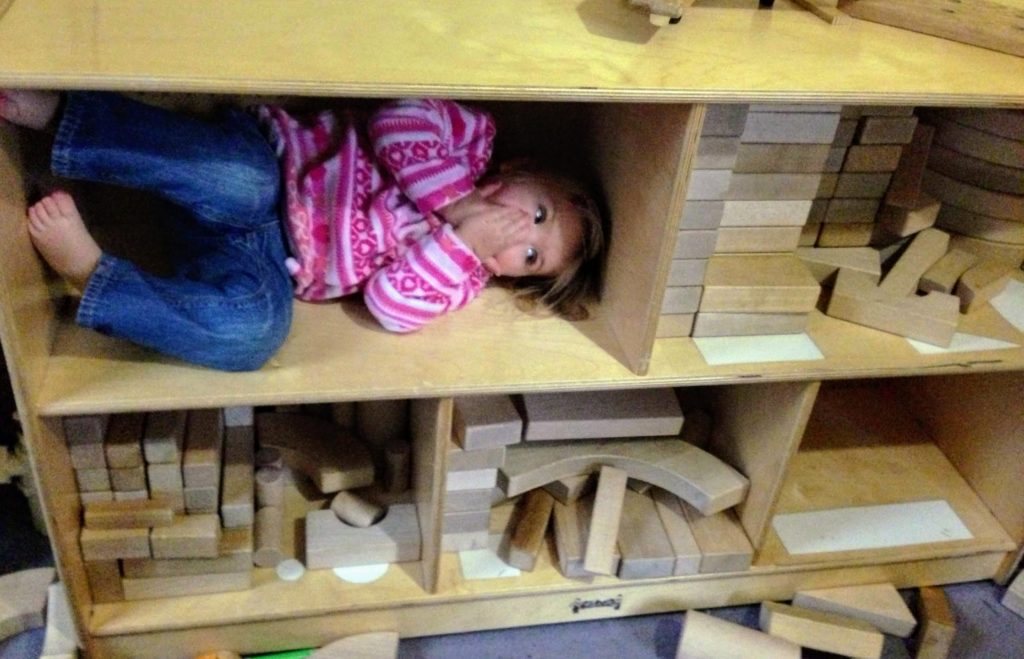
Blocks are a wonderful tool for the children to have. As you mentioned, it can be a source of math and science lessons as well as just a fun imaginative game of make believe!